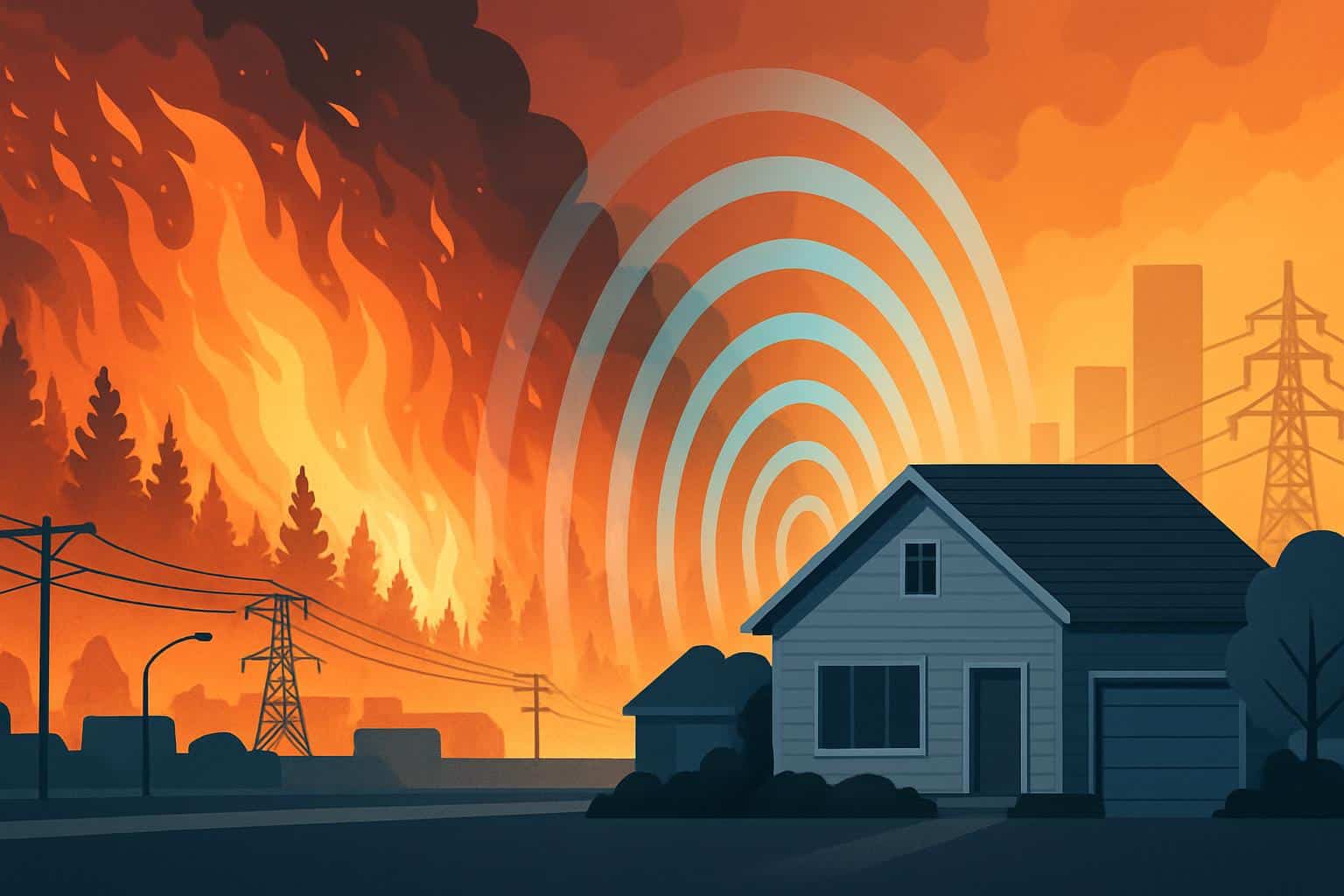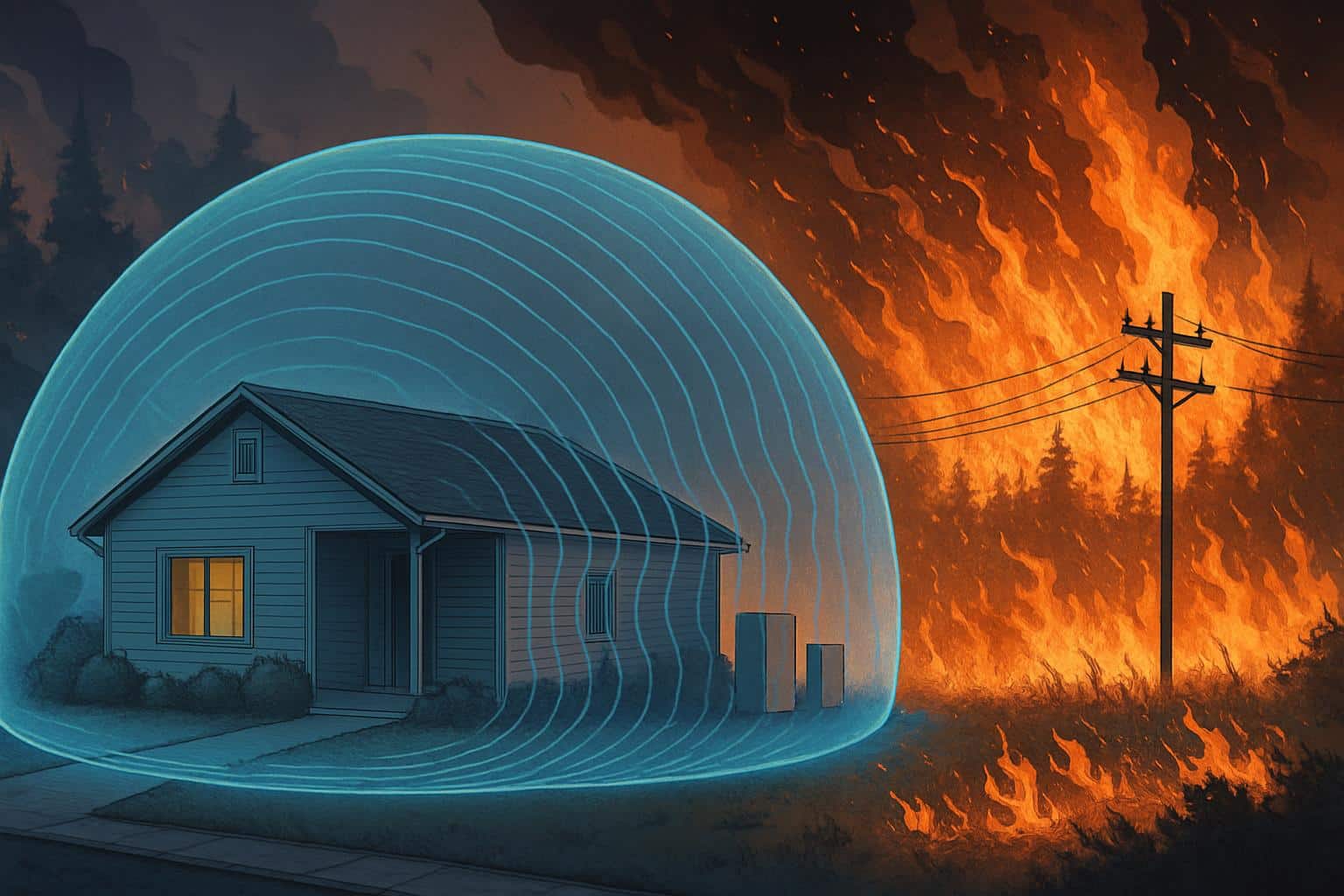The next line of defense against raging wildfires may be safely establishing an air bubble as a barrier. It’s not hard to imagine it lining your driveway and shielding you from the heat and flames (preferably we won’t have to imagine). A wave of startups and researchers is placing their hopes on infrasound — deep, low-frequency pressure pulses below the range of human hearing — as a way to tamp down flames before they give rise to massive wildfires that surround homes and critical infrastructure. The promise is a dry, always-on layer of protection that complements hardening steps like ember-resistant vents and defensible space.
Early prototypes have demonstrated that directed infrasound can knock down an open flame from meters away, hinting at a pathway to roofline and perimeter systems for stemming ember ignitions — a scenario that red-flag wildfire conditions are known to cause. Utilities, insurers, and fire scientists are watching closely, because the technology addresses an expensive gap: when small ignitions become costly losses.

How Silent Infrasound Waves Disrupt and Suppress Open Flames
At the flame front, it is a careful juggling act: heat versus fuel species versus oxygen. When these reach the interface, high-amplitude low-frequency waves jostle it. Laboratory results, such as a Defense Advanced Research Projects Agency investigation of acoustic flame suppression, demonstrate that pressure oscillations have the ability to thin the flame sheet, promote mixing, which cools the reaction zone, and peel off the boundary layer from fuel surfaces. The overall effect is that the fire needs a lower energy density to be self-sustaining.
In contrast to audible explosions, infrasound propagates over greater distances with reduced attenuation, and without concerns for hearing loss if designed accordingly. That is causing some acoustic wizards to ditch conventional speakers in favor of piston-driven sound sources — devices that more closely resemble a single-cylinder engine than a woofer — tuned to generate powerful, tightly controlled pulses at around 10–20 Hz.
From Garage Experiments to Perimeter Protection for Homes
The idea grabbed attention when college engineers showed off a bass-powered extinguisher that doused small fires. Today’s setups take the concept outside. One outfit, Sonic Fire Tech, claims to have replaced the subwoofer with a piston that travels in and out when air is fed through rigid ducts. The emitters install along the roof ridge to sweep out gutters (a prime ignition point in post-fire evaluations by the Insurance Institute for Business & Home Safety) and under eaves to reach where exterior walls meet their bases, where embers collect.
Activation can be triggered by flame or heat sensors, generating a local “pressure curtain” to perturb developing flames. The power requirements are modest — a few hundred watts for a home-sized unit — enabling battery backup when the grid is down. Because it is based on physics rather than water, the system can be used during droughts and water shutoffs that frequently accompany big fire weather.
Range is still the biggest engineering challenge. Demonstrations have run to tens of feet — scaled-up drivers and arrays could cover the far side of a yard or line a fence, but the proving ground is real-world winds and complex fuel beds.

Early Pilots and the Insurance Industry’s Interest and Trials
Western utilities, such as Pacific Gas and Electric Company and Southern California Edison, have examined pilot placements to secure test homes and equipment yards. One chemical storage operator has expressed interest, viewing the infrasound as a non-sparking, immediately repeatable suppression layer over high-consequence facilities.
Insurers are watching as losses mount in the wildland-urban interface. The phenomenon of carrier retrenchment in high-risk areas is well documented by the California Department of Insurance; underwriters are looking for protections that result in a quantifiable reduction in ignition probability. If infrasound systems meet established guidelines — and should there be a parallel with components of residential sprinkler standards (e.g., NFPA 13D) as equivalent — policy credits or discounts may come. That will take independent testing, reliability, and maintenance data, as well as clear direction to prevent unnecessary activations.
What the Latest Data Shows About Wildfire Risk and Costs
Millions of acres burn each year in the U.S., and losses to structures have increased as more people build houses in fire-prone landscapes, according to the National Interagency Fire Center. One severe wildfire season in the state caused about $150 billion in total impacts when adding health and indirect economic effects, researchers at the University of California estimated. Independent calculations by Stanford-affiliated economists account for tens of billions every year in smoke-related health damages nationwide.
Against that backdrop, economics matter. Standard home-hardening packages can cost 1% to 3% of the value of a property. Designers of the infrasound systems say they are targeting the low end of that range, selling their technology as a complement to ember-resistant vents, Class A roofs, and vegetation management — and in some cases as an alternative to outdoor sprinklers that demand plenty of water and must be winterized.
Limits of Infrasound Protection and What’s Next in Development
By itself, no acoustic system will halt a fast-moving crown fire. Infrasound does not cool surfaces like water, and intense radiant heat can cause materials to burn even when there is no open flame. Performance under wind, complex terrain, and heavy ember showers needs external testing. Engineers will also have to figure out how to reduce low-frequency exposure within the home and keep levels comfortable and safe while working outside.
Still, the logic is undeniable: turn electricity into pressure waves that can snuff out the first, smallest flames when seconds matter. If pilots verify consistent suppression at practical distances, silent sound might slide into a layered defense: quiet and automatic but reusable — buying vital time between a stray spark and a catastrophic loss.

